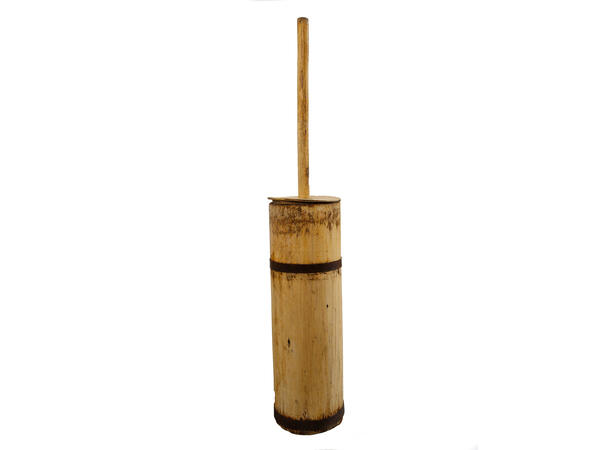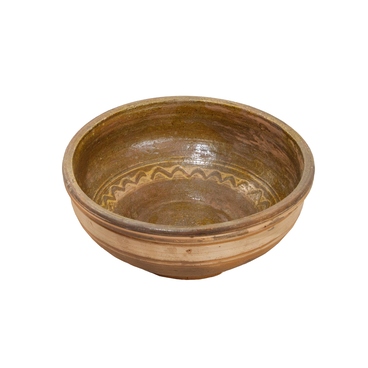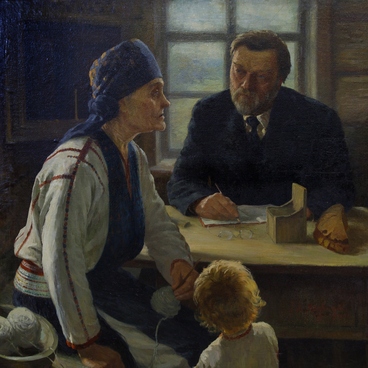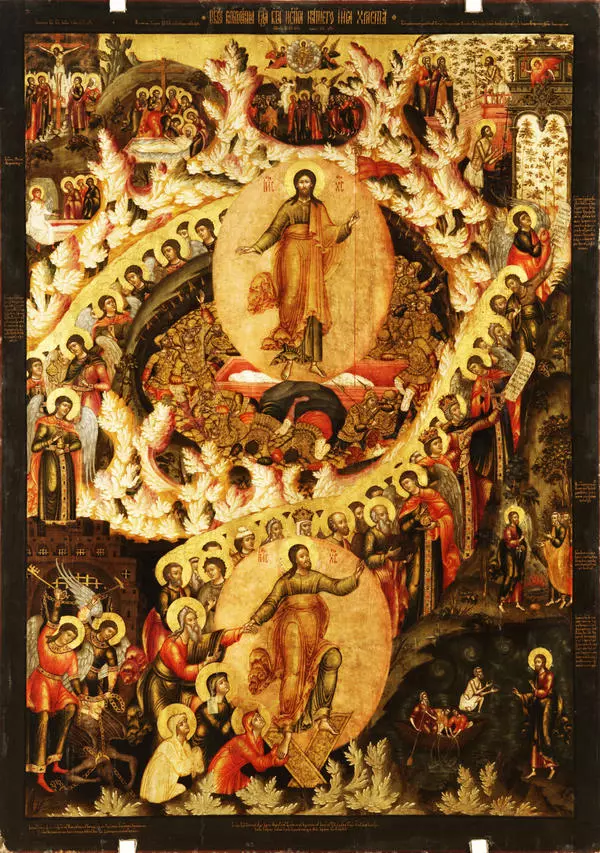The handcrafted butter churn was made by Fyodor Ignatyev, a carpenter from the village of Shaly, Temnikovsky district, Tambov province. It was donated to the museum by Galina Antipova, a cousin of the craftsman’s daughter.
The butter churn consists of a body, a plunger with a disc and a lid. The cylindrical body is made of solid linden trunk, at the bottom edge and just above the middle part it is bound by two forged metal hoops, fastened with overlapping rivets. A plunger is a stick with a set on its working end wooden disc and with four notches on its circumference for the free passage of buttermilk — the cream obtained in butter production.
Scientists believe that the first butter churns date back to the 6th century. In Scotland archaeologists have discovered the lid of a butter churn dating from this century.
Having a churn or a “pakhtalka” was considered a sign of prosperity. People used to say about a good owner: “he has butter in his beard “. The most ancient type of pakhtalka was a tall, dug-out tub where butter was churned with a stick with wooden circle set on its end, quickly moving it up and down.
In time, more advanced butter churns appeared in the form of a dug-out or assembled from staves horizontal cylinder, inside which the axe with four blades rotated. Butter was churned in them by turning the handle.
Usually, it was women who milked cows and processed dairy products. They churned butter mostly in spring and summer when milk yields were more abundant. To make it, milk was left to rest in pots, later cream or sour cream (if the milk turned sour) was skimmed off with a spoon and put into the butter churn.
Children and teenagers were usually entrusted with churning butter because it was not difficult and did not require much physical strength or special skills, but it was time-consuming. The butter was rinsed with cold water. The remaining liquid, buttermilk, was used for food, for making dough, and for feeding calves.
In the folk cuisine butter was used in liquid dishes. It was also used to grease porridges, potatoes, pie fillings, and pancakes. In summertime the butter was melted so it wouldn’t be spoiled.
The butter churn consists of a body, a plunger with a disc and a lid. The cylindrical body is made of solid linden trunk, at the bottom edge and just above the middle part it is bound by two forged metal hoops, fastened with overlapping rivets. A plunger is a stick with a set on its working end wooden disc and with four notches on its circumference for the free passage of buttermilk — the cream obtained in butter production.
Scientists believe that the first butter churns date back to the 6th century. In Scotland archaeologists have discovered the lid of a butter churn dating from this century.
Having a churn or a “pakhtalka” was considered a sign of prosperity. People used to say about a good owner: “he has butter in his beard “. The most ancient type of pakhtalka was a tall, dug-out tub where butter was churned with a stick with wooden circle set on its end, quickly moving it up and down.
In time, more advanced butter churns appeared in the form of a dug-out or assembled from staves horizontal cylinder, inside which the axe with four blades rotated. Butter was churned in them by turning the handle.
Usually, it was women who milked cows and processed dairy products. They churned butter mostly in spring and summer when milk yields were more abundant. To make it, milk was left to rest in pots, later cream or sour cream (if the milk turned sour) was skimmed off with a spoon and put into the butter churn.
Children and teenagers were usually entrusted with churning butter because it was not difficult and did not require much physical strength or special skills, but it was time-consuming. The butter was rinsed with cold water. The remaining liquid, buttermilk, was used for food, for making dough, and for feeding calves.
In the folk cuisine butter was used in liquid dishes. It was also used to grease porridges, potatoes, pie fillings, and pancakes. In summertime the butter was melted so it wouldn’t be spoiled.




